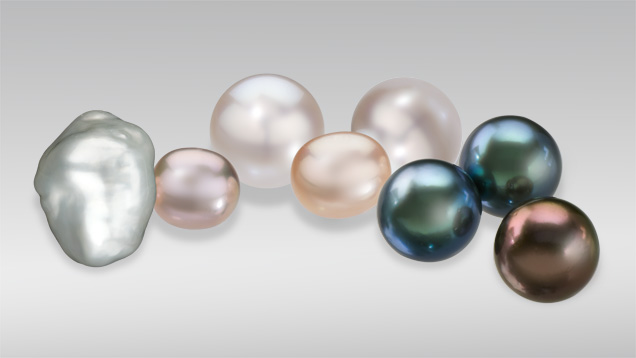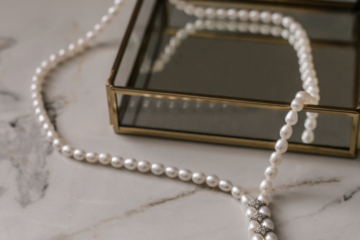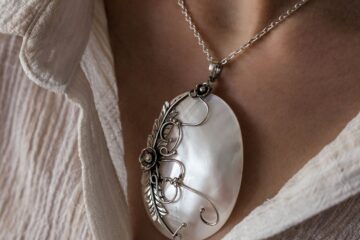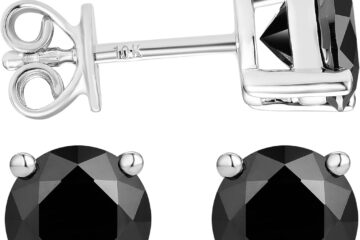What Color are Natural Pearls Natural pearls come in a variety of colors, including white, cream, pink, and black. The color of a pearl is determined by the type of shellfish that produces it and the environment it grows in.
Pearls have long been prized for their beauty and rarity, with each color of pearl holding its own unique appeal. White pearls are classic and timeless, while pink pearls are feminine and delicate. Cream pearls have a warm and luxurious hue, while black pearls are exotic and mysterious.
The diverse range of colors that natural pearls exhibit adds to their allure and makes them a coveted choice for jewelry pieces.
The Science Of Natural Pearl Color
Factors Affecting Natural Pearl Color
Natural pearls derive color from several factors:
- Body Color: Determines pearl’s base hue
- Overtone: Adds a secondary shade
- Iridescence: Creates varying color effects
- Color Zone: Concentrated hues in specific areas
Formation Process Of Natural Pearl Color
Pearl color originates from the nacre formation, determined by:
- Natural pigments in the mollusk host
- Reflection and refraction of light within the layers
- Mineral deposits in the environment
Credit: www.pearlsofjoy.com
The Rarity Of Natural Pearl Colors
Uncommon Natural Pearl Colors
Natural pearls come in a variety of shades beyond the classic white.
- Golden hues
- Black tones
- Gray, blue, pink
Impact On Natural Pearl Value
The uniqueness of the color of natural pearls greatly influences their worth.
- Rare colors demand higher prices
- Exotic hues are highly sought-after
Identifying Natural Pearl Color
Identifying natural pearl color is an essential part of evaluating the quality and authenticity of pearls. Natural pearls come in a wide range of colors, each with its unique beauty. Let’s explore the expert techniques for identifying natural pearl colors and distinguishing between natural and enhanced colors.
Expert Techniques For Identification
Identifying the color of natural pearls requires expertise and careful observation. Experts use various techniques, including:
- Utilizing natural light to assess the pearl’s color under different conditions.
- Examining the overtone, which is the translucent layer of color over the pearl’s body color.
- Using a color-correct light source to observe the subtle nuances of the pearl’s hue.
- Comparing the pearl to a standardized color chart to determine its exact color and overtone.
Distinguishing Natural Vs. Enhanced Colors
It is crucial to discern between natural and enhanced pearl colors. Enhanced colors are often achieved through treatments such as dyeing or bleaching. To distinguish between the two, experts consider:
- Assessing the consistency and depth of color throughout the pearl’s layers, as natural colors are usually more nuanced and varied.
- Identifying any signs of irregular color penetration, which may indicate artificial enhancement.
- Inspecting the overall luster and iridescence, as enhanced colors may appear overly uniform and lacking in depth.
Cultural And Symbolic Significance
Throughout history, natural pearls have held great cultural and symbolic significance across various civilizations. Their exquisite colors have captivated societies, leaving an indelible mark on art, fashion, and folklore. Let’s explore the historical associations with natural pearl colors and the symbolism they hold in different cultures.
Historical Association With Natural Pearl Colors
In ancient times, natural pearls were highly treasured for their unique color variations. Different colors were valued differently, and each hue had its significance. Here are some historical associations with natural pearl colors:
Symbolism In Different Cultures
Across different cultures and traditions, natural pearls have symbolized various qualities and beliefs. Let’s delve into the symbolic meanings attributed to natural pearl colors:
Contemporary Use Of Natural Pearl Colors
Discover the captivating hues of natural pearls, ranging from lustrous whites to shimmering silvers and subtle creams. These exquisite gems showcase a spectrum of soft, elegant colors, each reflecting the beauty of the sea with its unique iridescence.
Protecting And Preserving Natural Pearl Colors
Natural pearls come in a remarkable array of colors, ranging from delicate white and cream to shades of pink, blue, and even gold. These stunning hues are a testament to the ongoing efforts of pearl experts in protecting and preserving the diverse and exquisite colors found in these natural wonders.
Protecting and preserving the natural colors of pearls is essential to maintain their timeless beauty and value. Natural pearls come in a range of stunning colors, from lustrous whites to rich shades of pink, blue, and silver. To ensure their colors last for generations, it’s crucial to implement preventative measures for color fading and proper storage and maintenance.
Preventative Measures for Color Fading
Proper care is crucial to prevent the fading of natural pearl colors. Exposure to harsh chemicals, perfumes, and cosmetics can accelerate color fading. Avoid contact with these substances to preserve the luster and hues of your pearls.
Proper Storage and Maintenance
Storing pearls in a soft pouch or a separate compartment in a jewelry box can safeguard them from scratches and abrasions. Additionally, pearls should be stored away from other jewelry to prevent damage. Regularly wiping pearls with a soft, damp cloth can help remove dirt and oils, ensuring their colors remain vibrant.
By incorporating these preventative measures and practicing proper storage and maintenance, individuals can protect and preserve the natural beauty of their pearls for years to come.
Challenges In Documenting Natural Pearl Color
Documenting the natural color of pearls poses certain challenges due to the diversity and uniqueness of their colors. Identifying and accurately describing the color of natural pearls requires a thorough examination and expert knowledge to ensure precise documentation.
Recording And Conserving Color Information
Natural pearls’ color information is vital but challenging to document accurately due to their unique nature.
Documenting color changes in pearls is essential for future identification and preservation.
Development Of Standardized Color Grading
Creating standardized color grading systems for natural pearls is crucial for consistency in evaluation.
These systems ensure accurate descriptions and comparisons of pearl colors across the industry.

Credit: karennamarajcollection.com

Credit: www.gia.edu
Frequently Asked Questions For What Color Are Natural Pearls
What Color Are Natural Pearls?
Natural pearls can come in a variety of colors, including white, cream, pink, and black.
Are Natural Pearls Always White?
No, natural pearls can be found in a range of colors, not just white. They can be cream, pink, or even black.
Can Natural Pearls Be Dyed?
Natural pearls cannot be dyed because the color is a result of the mollusk’s environment during formation.
Are Natural Pearls More Valuable Than Cultured Pearls?
Natural pearls are generally considered more valuable than cultured pearls due to their rarity and unique characteristics.
Conclusion
The color of natural pearls varies from white to black and everything in between. Their hues are influenced by the species of mollusk and the conditions of their environment. Understanding the natural color range of pearls can help you appreciate their beauty and uniqueness.
Whether you prefer white, pink, or black pearls, their natural origins make each one special and valuable.



